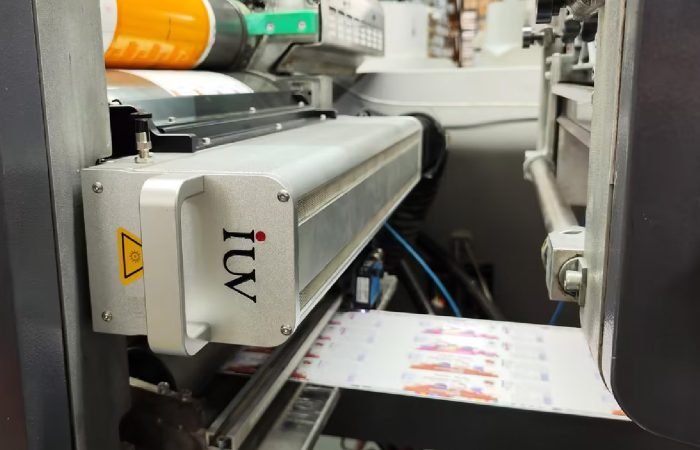Narrow web printing thrives on precision – one misfired color or smudged coating can derail entire production runs. That’s where UV LED curing systems shift the game, particularly for applications demanding razor-sharp registration and instant drying. Unlike traditional mercury-vapor lamps, these solid-state units emit targeted ultraviolet wavelengths to polymerize inks and coatings within milliseconds. The result? Substrates exit the press bone-dry, ready for slitting or die-cutting without post-curing delays.
Label converters reap measurable gains here. Pressure-sensitive materials – especially thin films and heat-sensitive synthetics – warp under conventional curing’s infrared bleed. UV LED’s cold cure process eliminates substrate distortion, maintaining dimensional stability for kiss-cut labels and intricate overlaminate structures. Flexo printers pushing 400 fpm on unsupported vinyls report 0.3% waste reductions simply by switching from arc lamps.
Water-based inks dominated narrow web for decades, but UV formulations now penetrate deeper thanks to LED advancements. Photoinitiators tuned to 365-395nm spectra enable full curing of opaque whites and metallics in single passes. Hybrid presses blending solvent and UV stations leverage this for dual-cure effects: a matte flood coat cured by LED followed by solvent-based tactile varnish. The technical sweet spot? Achieving 95% cure through 12-micron ink films without scorching PET liners.
Sheet-fed offset shops venturing into narrow web territory face a learning curve. LED curing demands precise ink/coating chemistry matching – oxygen inhibition can leave surfaces tacky if amine synergists aren’t dialed in. But get the formula right, and you’ll print metallic effects on thermal transfer ribbons that traditional drying would oxidize into dull finishes. One Swiss converter landed a premium watchband contract by perfecting scratch-resistant UV-cured gold on 0.2mm silicone.
Energy metrics tell their own story. A 20-inch web press with mercury lamps draws 38kW during curing; LED equivalents consume 9kW while eliminating warm-up cycles. Factoring in bulb replacements and HVAC costs for heat dissipation, ROI timelines often clock under 18 months. Savvy operations pair LED units with low-oxygen inertization systems, boosting cure speed another 30% by suppressing inhibitory air exposure.
Substrate versatility keeps expanding. Early LED adopters stuck to papers and standard films, but today’s systems cure adhesives on direct-print shrink sleeves and conductive inks on RFID antennas. A Midwest converter recently prototyped medical device overlays using UV LED to bond antimicrobial coatings to polyolefin webs – something mercury lamps would have degraded in seconds.
The maintenance angle shouldn’t be overlooked. Mercury lamps degrade output by 15% every 1000 hours, requiring costly radiometer checks. LED arrays maintain consistent intensity for 20,000 hours, with spectral output variances under 5% across their lifespan. Predictive maintenance algorithms now track diode performance, alerting technicians to individual emitter failures before they impact cure quality.
Regulatory pressures accelerate adoption. California’s Rule 1113 and similar measures targeting mercury emissions make LED systems compliance necessities rather than options. Converters servicing EU markets appreciate REACH exemption for UV LED’s non-volatile operation – no more scrambling to reformulate when new SVHC chemicals get listed.
Yet challenges persist. Achieving complete through-cure on pigmented inks still requires careful spectral matching. Some photoinitiator suppliers hedge formulations for broad compatibility, forcing printers to accept slower cure speeds. The solution? Partner with chemists developing narrow-spectrum initiators like benzophenone derivatives optimized for 385nm LEDs.
Future developments point toward tunable wavelength systems. Imagine adjusting UV output from 365nm to 410nm on the fly to accommodate different ink sets – a possibility as multi-diode arrays become cost-effective. Others explore UV LED’s potential in electron beam curing hybrids, combining instant surface cure with deep EB penetration for multilayer security prints.
For now, the value proposition remains clear: faster turnaround, broader material compatibility, and slashed operating costs. A Texas label house quantified it starkly – switching two presses to UV LED curing let them fulfill 43% more orders monthly without adding shifts. That’s the kind of math that gets CFOs and press operators nodding in unison.












